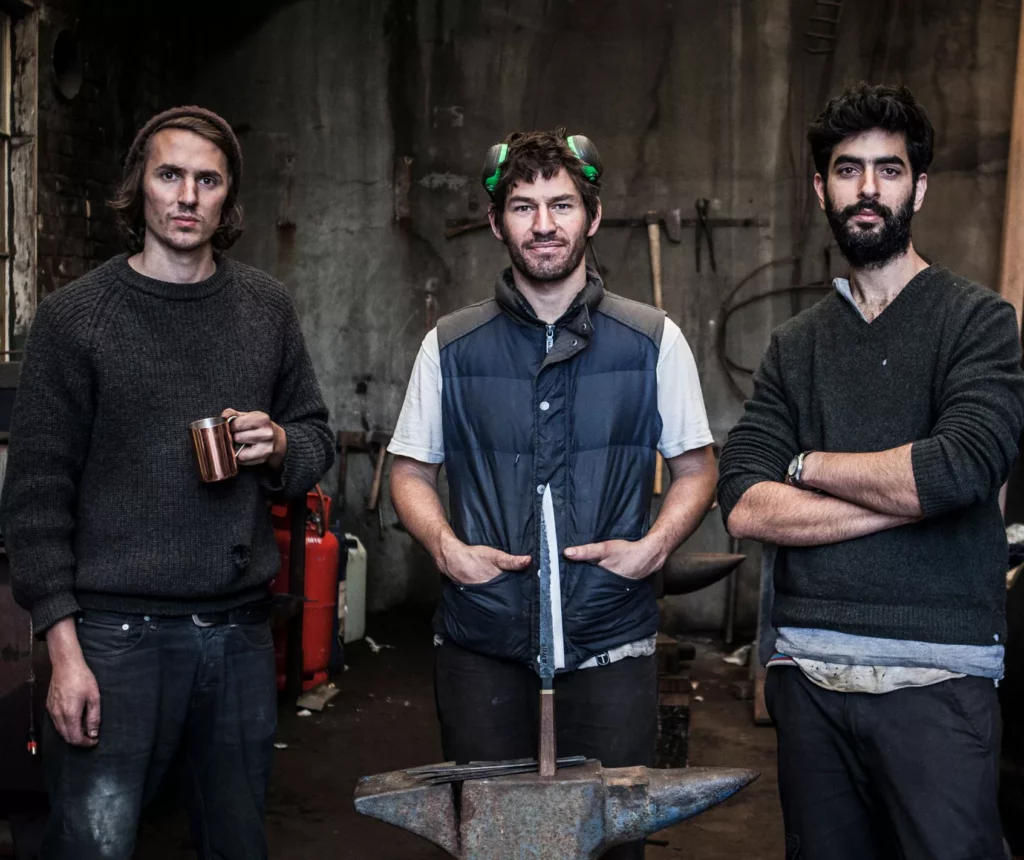About us
Self-taught knife making began as a hobby that James Ross-Harris and Jon Warshawsky cultivated in their back garden on a hand-made forge, fuelled by a blend of charcoal.

Shortly after setting up, Blenheim Forge expanded to include machine-making extraordinaire Richard Warner, and moved into Arch 229, Blenheim Grove; a railway arch with a long history of metalwork artistry.
Blenheim Forge now sells their knives to chefs and cooking-enthusiasts around the world.
Forging Knives in South London
When Jon Warshawsky and James Ross-Harris founded Blenheim Forge in 2014, they had next to no idea how to make a knife. The pair originally met whilst sharing a house in south London, and used to fill their free weekends by knocking up DIY projects in their back garden. First, there was a meat smoker. Then, a hot tub to while away the winter evenings. Then, they thought they’d turn their hands to knife making.
James built a forge out of fire bricks and a leaf blower, and the pair forged their first blade – a beautiful, pattern-welded number, with etchings all across the surface.